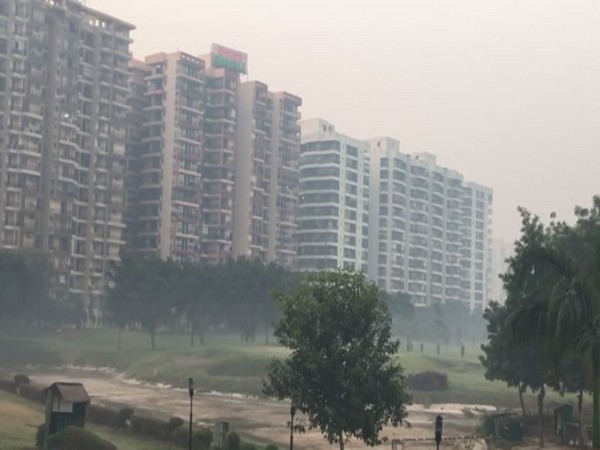The national capital of India, Delhi, and its neighboring city, Noida, continue to battle a severe air quality crisis, with the Air Quality Index (AQI) reaching 322 and 324, respectively, categorizing the air quality as ‘Very Poor.’ Despite the implementation of a 15-point winter action plan and other measures, the situation remains grim, necessitating initiatives like “Red Light On, Engine Off” to address the issue. It is expected that the ‘Very Poor’ air quality will persist until October 31st in the National Capital Region (NCR).
The System of Air Quality and Weather Forecasting and Research (SAFAR) India reported that Delhi’s AQI was 322, Noida recorded an AQI of 324, and Gurugram had an AQI of 314, all falling into the ‘Very Poor’ category.
Delhi’s Chief Minister, Arvind Kejriwal, unveiled a 15-point winter action plan, emphasizing concerns such as vehicle emissions, biomass burning, and dust particles. While Particulate Matter 10 (PM10) levels decreased, PM2.5 levels increased, indicating that vehicle emissions and biomass burning are significant contributors to the rising air pollution. The “Red Light On, Engine Off” campaign was launched to combat these issues.
The Graded Response Action Plan (GRAP) has been activated to mitigate pollution’s impact in Delhi, including measures like road cleaning and water sprinkling. Efforts are also underway to address crop residue burning by collaborating with neighboring states’ environment ministers. The upcoming 10 to 15 days are critical due to pollution sources such as Diwali, crop burning, and Dussehra.
Understanding the Factors Behind Delhi’s Persistent Air Quality Crisis:
Air Pollutants: Various sources contribute to pollution, including crop burning, vehicular emissions, construction dust, industrial pollution, firecrackers, and landfill fires.
Weather Conditions: Stagnant winds during winter trap pollutants over the region, and low air inversion prevents the upward movement of polluted air.
Geographical Reasons: Delhi’s landlocked location and the presence of the Himalayas contribute to dust and pollutant accumulation.
Impact of Air Pollution:
– Health Risks: Prolonged exposure to poor air quality can lead to respiratory issues, bronchitis, and chronic diseases like heart disease, stroke, and lung cancer.
– Growth of Babies: Poor air quality can hinder the natural growth of infants.
– Health and Economic Burden: Air pollution places financial and health burdens on households and governments.
– Environmental Consequences: It damages crops, trees, and causes water pollution through the release of nitrogen oxides. Air pollution also affects aviation operations.
Effective Measures to Tackle Delhi’s Air Pollution Crisis:
– Graded Response Action Plan (GRAP): Introduced in 2017, it includes actions like halting construction, school and office closures and limiting vehicular movement during severe pollution episodes.
– Odd-Even Vehicles: Vehicles with odd and even registration numbers ply on alternate days.
– Peripheral Roads: Construction of peripheral highways diverts commercial traffic, reducing pollution.
– Ban on Old Fossil Fuel Vehicles: Diesel vehicles over 10 years old and petrol vehicles over 15 years old are banned.
– Control Stubble Burning: Farmers are incentivized to use machinery to reduce stubble burning, and fines are imposed for violations.
– Vehicle Norms: Bharat Stage VI norms are mandatory for vehicles in Delhi-NCR to reduce emissions.
– Electric Vehicles Promotion: Efforts are made to promote electric vehicles as an alternative to fossil fuel vehicles.
– Ban on Firecrackers: Bursting firecrackers is banned to prevent increased air pollution.
the persistently poor air quality in Delhi and Noida poses severe health risks, environmental consequences, and challenges for aviation. While measures like the GRAP and the promotion of electric vehicles are steps in the right direction, addressing the diverse sources of pollution requires a concerted effort from the government, industries, and the public to ensure cleaner air for all residents of the region.
(Inputs from ANI)














